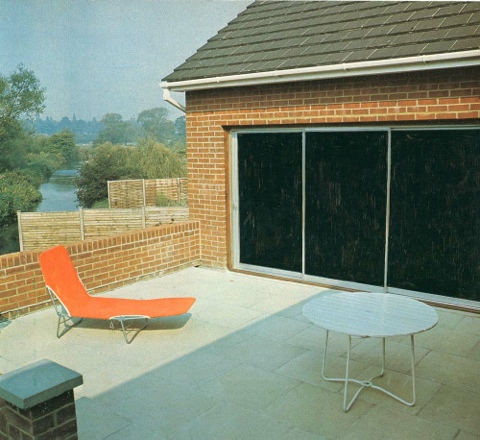
16th March – 21st April 2012
PayneShurvell is to present ‘House Plants’, the second solo show of Andrew Curtis with the gallery. Curtis’s first solo exhibition ‘Wild England’ (October 2010) consisted of a series of large monochrome images that Time Out described as presenting ‘suburban streets with a sinister edge’.
‘House Plants’ offers an incisive look at the nature of taste and judgement, exploring how these touchstones of Western aesthetics are expressed and applied in suburban or domestic environments. The show consists of two bodies of work. In the first group of prints, Curtis adapts photographs from architectural magazines, reprinting images of suburban homes with each of their windows carefully blacked out. The artist applies a similar process in the second set of prints, taking photographs of domestic settings that feature house plants, masking all background and context to set ferns and flowers against a field of black.
Curtis derives his motifs and subject matter from books and manuals that not so long ago created the taste, habits and methods that middle-class Britons used to shape their internal and external environments. The artist reprocesses these images as digital prints before masking the windows in the houses, or all background and context of the setting in the house plant images, with Rotring ink or exterior enamel paint. Curtis transforms the appearance and purpose of the photographs to examine the role of taste and visual pleasure in everyday, domestic settings.
The windows of these ordinary homes offer the artist a range of structures that conceal as much as they reveal. Curtis applies a black monochrome surface to give the window a haunting, ambiguous presence: the window becomes at once a mask, a void and a radically open-ended signifier. The window no longer offers a transition between inside and out, but is its own medium, addressing the surface of the photographic object and the facade of suburban experience. The windows also take on the form of a modernist abstraction, as if the spirits of Malevich and Mondrian had moved, stealthily, into the British suburbs.
Traditional debates about beauty often begin with questions about nature and natural forms – the shape and colour of a flower, the droop or silhouette of a tree, the green and pleasant surfaces of a pastoral landscape. Curtis recuperates a humble house plant to create a microcosm of that debate, asking whether natural forms retain their beauty or decorative purpose when cut off from their context. A fern emerges from a sea of black as an icon of a universal plant, a flower becomes isolated and grotesque, a cactus a strange excrescence: without their familiar setting, the plants take on a new form, a strange and melancholy beauty that transcends their mundane origins. In contrast to a black square, we might offer the particular, living thing, and in ‘House Plants’ Curtis opens up a conversation about the absence of form and detail in depiction. How much information can you eliminate before the picture ceases to function as an objective image? Do we appreciate the shapes and colours in themselves, or is it because they promise something else that we find them attractive? (Text by Craig Burnett).
Andrew Curtis (b. 1979, London) graduated with an MA in Fine Art Printmaking from the Royal College of Art in 2009. He was chosen for the Bloomberg New Contemporaries exhibition (2009) and the Catlin Guide (2009). His work is held in various collections, including the Royal College of Art, the V&A, Oregon State University, Queen’s University, Belfast, University of Wales and private collections in the UK, Italy and the USA.





